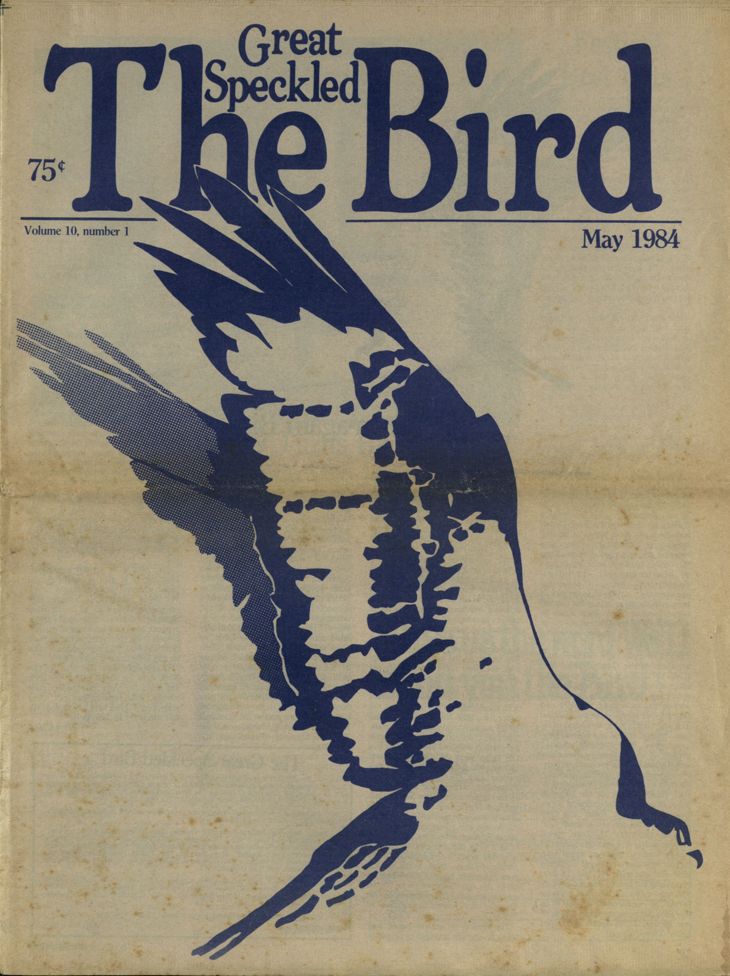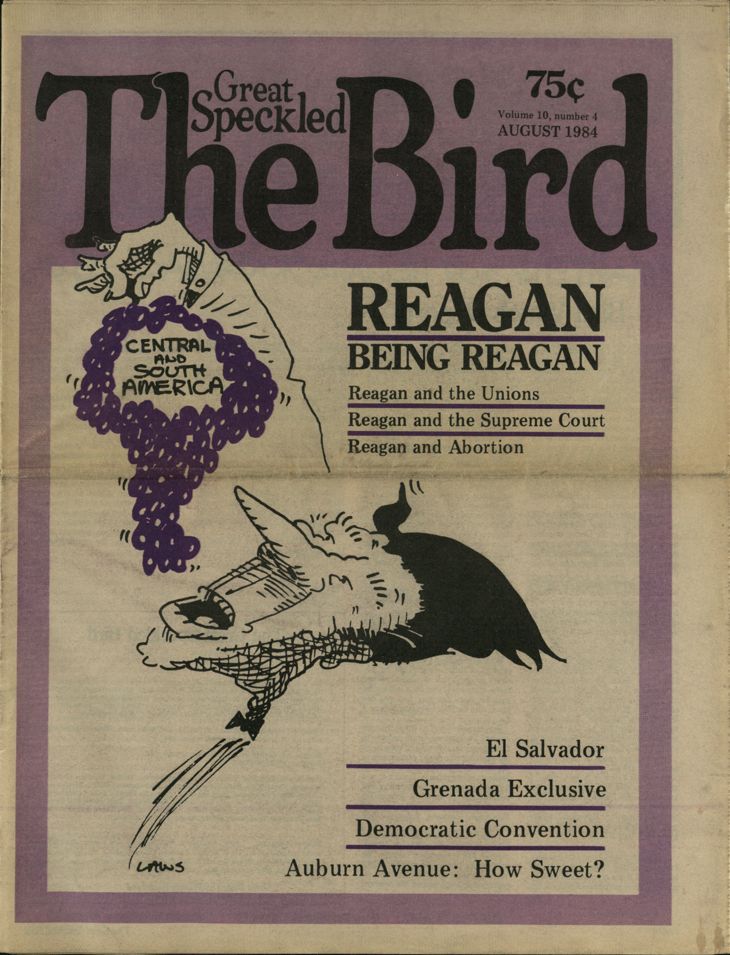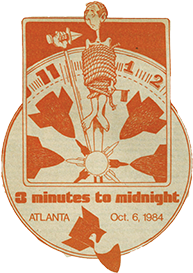The Bird Rises Again..
In May 1984, some of the original members of The Bird along with a new group of volunteers came together to relaunch the paper. Again, The Bird took aim squarely at social and political injustices and were critical of Ronald Reagan who was running for a second term as well as his policies on nuclear weapons and other issues. Tom Coffin, who introduced the very first issue in March of 1968, had this to say:
“Why it borders on the mythological. Here we are, looking down the long barrel of the Orwellian nightmare (made all too possible this time if Rolls Royce Ronnie and his double-rich cronies get their way for Four More); and down the short barrel of nuclear annihilation …add to them the various blunderbusses and cannon of environmental pollution, disintegrating cities, a collapsing economy and … Whew! In the nick of time, who should re-appear but that old Great
Speckled Bird, once again to spread hope and enlightenment in our fair city, to slay
the dragons and lead us out of this mess.”
Cartoon of the Doomsday clock set at 3 minutes to midnight, illustrating humanity’s failure to reduce global nuclear arsenals prompted the Bulletin of the Atomic Scientists in 1947 to create a conceptual design to show the perils of the nuclear age. In 1984 the clock came again dangerously close with a complete breakdown of communication between world powers and with a real potential for Armageddon. Great Speckled Bird v. 10 no. 5 (September 1984)

And The Bird endeavored to fulfill its stated mission monthly through the rest of 1984.
Citing financial difficulties and lower-than expected volunteer participation, Beth Cooman and Teresa Secules announced in their column “Bird Watch” that January 1985 would be the last issue of the paper’s second flight. A brief attempt was made by a different group of volunteers to revive a version of The Bird in 2006, but only managed to publish one issue. Despite its relatively short life, the impact of The Great Speckled Bird has lived far beyond its heyday. The paper’s pioneering coverage of social justice issues and its example of cooperative, democratic participation has inspired activists in Atlanta and beyond over the past 54 years.



